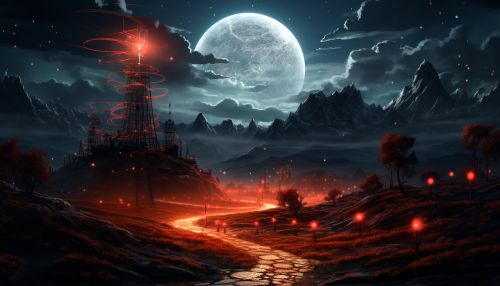Conservation of Energy
Introduction
The conservation of energy is a fundamental concept in physics that states that the total amount of energy in an isolated system remains constant over time. This principle, also known as the first law of thermodynamics, implies that energy can neither be created nor destroyed, but can only be transformed or transferred from one form to another.


Historical Overview
The idea of energy conservation has been present in some form since ancient times. However, it was not until the 19th century that the concept was formalized and widely accepted in the scientific community. The work of scientists such as James Joule, Julius Mayer, and Hermann Helmholtz was instrumental in establishing the law of energy conservation.
Energy Forms and Transformations
Energy exists in various forms, including kinetic energy, potential energy, thermal energy, chemical energy, electrical energy, and nuclear energy. These forms of energy can be transformed into each other. For example, a swinging pendulum converts potential energy into kinetic energy and back again. Similarly, a light bulb converts electrical energy into light and heat energy.
Mathematical Formulation
The conservation of energy can be mathematically expressed using the concept of work and energy. In physics, work is defined as the transfer of energy. If W is the work done on an object, and ΔK and ΔU are the changes in kinetic and potential energy of the object respectively, then the work-energy theorem can be written as:
W = ΔK + ΔU
This equation states that the work done on an object is equal to the change in its kinetic and potential energy. This is a mathematical representation of the conservation of energy.
Applications of Energy Conservation
The principle of energy conservation is widely used in many fields of science and engineering. In mechanics, it helps in solving problems involving motion. In electrical circuits, it is used to calculate the power consumption. In thermodynamics, it forms the basis of the first law of thermodynamics, which deals with the concepts of heat and work.
Conservation of Energy in Quantum Mechanics
In quantum mechanics, the conservation of energy principle is embodied in the time-independent Schrödinger equation. This equation describes how the quantum state of a physical system changes over time. It is an important tool in the study of quantum systems and has many applications in fields such as atomic physics, nuclear physics, and quantum chemistry.
Conservation of Energy in Relativity
In the theory of relativity, the conservation of energy is not as straightforward as in classical physics. Energy and momentum are intertwined into a four-vector, and the conservation law involves this four-vector as a whole. This leads to the famous equation E=mc^2, which states that mass and energy are equivalent and can be converted into each other.
Challenges to Energy Conservation
While the conservation of energy is a well-established principle in physics, there are certain situations where it appears to be violated. These include certain cosmological models and quantum gravity theories. However, these apparent violations are still a topic of ongoing research and debate in the scientific community.
